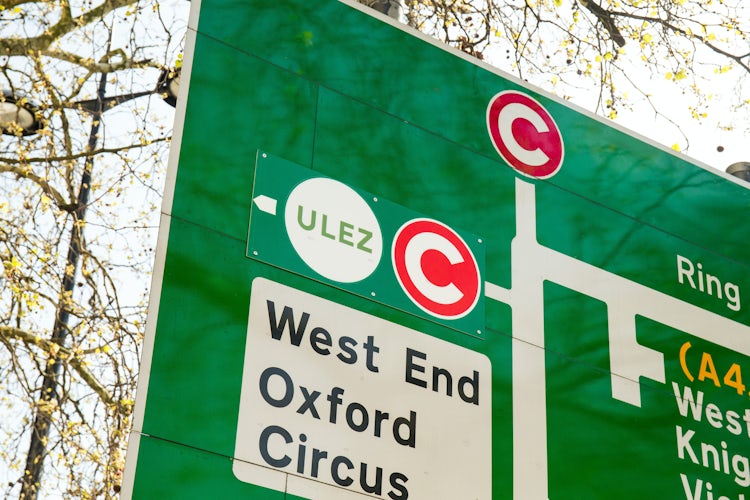ULEZ-compliant cars
The ULEZ — or Ultra Low Emissions Zone — which operates in London, is designed to drive high-pollution vehicles off the streets of the capital city. It was the first ULEZ introduced in the world, and it applies a daily charge for cars that don’t meet specific emissions standards. But there are some cars which can dance around the ULEZ costs, and which are they? And how does the whole ULEZ thing work? On this page, we’ll explain it all to you. Incidentally, other British cities — including Edinburgh and Oxford — have also introduced their own low emissions zones, but here we’re dealing specifically with the one in London.

Browse ULEZ-compliant car deals
You can browse ULEZ-compliant cars that won’t face a daily charge. It’s important to note that while the cars in this list should be compliant based on their age, you should use our online ULEZ checker to confirm.
Sell your car for what it's really worth
The free, easy way to get 5,500+ dealers all over the UK bidding on your car
What cars are ULEZ-compliant?
Whether or not your car is ULEZ-compliant — in that it won’t be charged the daily fee of £12.50 — is all based on which set of official emissions standards that your car meets. These standards were first introduced in 1992, by the European Union, hence why they’re called the Euro regulations, and they’re numbered, so the 1992 regulations were called Euro1.
ULEZ-compliant petrol cars
Since those early days, they’ve been regularly updated and tightened, and for petrol-engined cars and the ULEZ, the cutoff is Euro4. For most petrol-engined cars, that means anything built from January 2005.
ULEZ-compliant diesel cars
For diesel cars, the cutoff is more severe, and it’s only those diesel-engined cars that are compliant with Euro6 regulations that are allowed in without paying the charge, and that means cars made from September 2015 onwards.
ULEZ-compliant hybrid cars
Hybrid cars tend to have quite low emissions, especially emissions of nitrogen oxides (NOX) which is what the ULEZ is primarily concerned with, so most will be ULEZ-compliant and won’t have to pay the charge. However, basically, the same rules apply, so if it’s a petrol-engined hybrid, it must compliant with Euro4 regulations, and if it’s a (rare) diesel-hybrid, then it must be compliant with Euro6 regs.
ULEZ-compliant electric cars
Right now, any electric car — and that’s a fully-electric car, not a hybrid nor a plug-in hybrid — is exempt from paying the ULEZ charge, regardless of its age. However, that’s due to change on Christmas Day 2025, so keep your eye out for any announcements of EVs being hit with a ULEZ cost in the coming months.
ULEZ-compliant vans
All vans and commercial vehicles have to meet the same emissions standards as passenger cars if they’re to avoid paying the daily ULEZ charge, so that’s Euro4 (from roughly January 2006) for petrol-engined vans and Euro6 (from roughly September 2016) for diesel-engined vans.
How do I know if my car is ULEZ-compliant?
The rules-of-thumb applying to petrol and diesel engines for ULEZ — those 2006 and 2015/2016 cutoff dates — aren’t precise as not every car which was on sale on those dates will automatically be compliant with the right emissions standards. Fortunately, Carwow has you covered with our online ULEZ checker. You simply type in your registration plate and our tool will tell you if your car should be exempt from the ULEZ and Congestion Charge fee. There’s also a map which shows which areas are covered by the ULEZ, but in general if you’re inside the M25, you’re in the ULEZ.
Can I make my car ULEZ-compliant?
In theory, you could modify your car to make it ULEZ-compliant, but this can be an expensive business. Careful tuning of a petrol engine may bring its emissions down, but for a diesel engine it’s much more tricky, and basically involves installing an SCR, or Selective Catalytic Reduction (basically an AdBlue spray system) to reduce the car’s NOX emissions.
You’ll need to use a system that’s been approved by The Clean Vehicle Retrofit Accreditation Scheme (CVRAS), and any changes to your car will have to be notified to the DVLA and your insurer.





